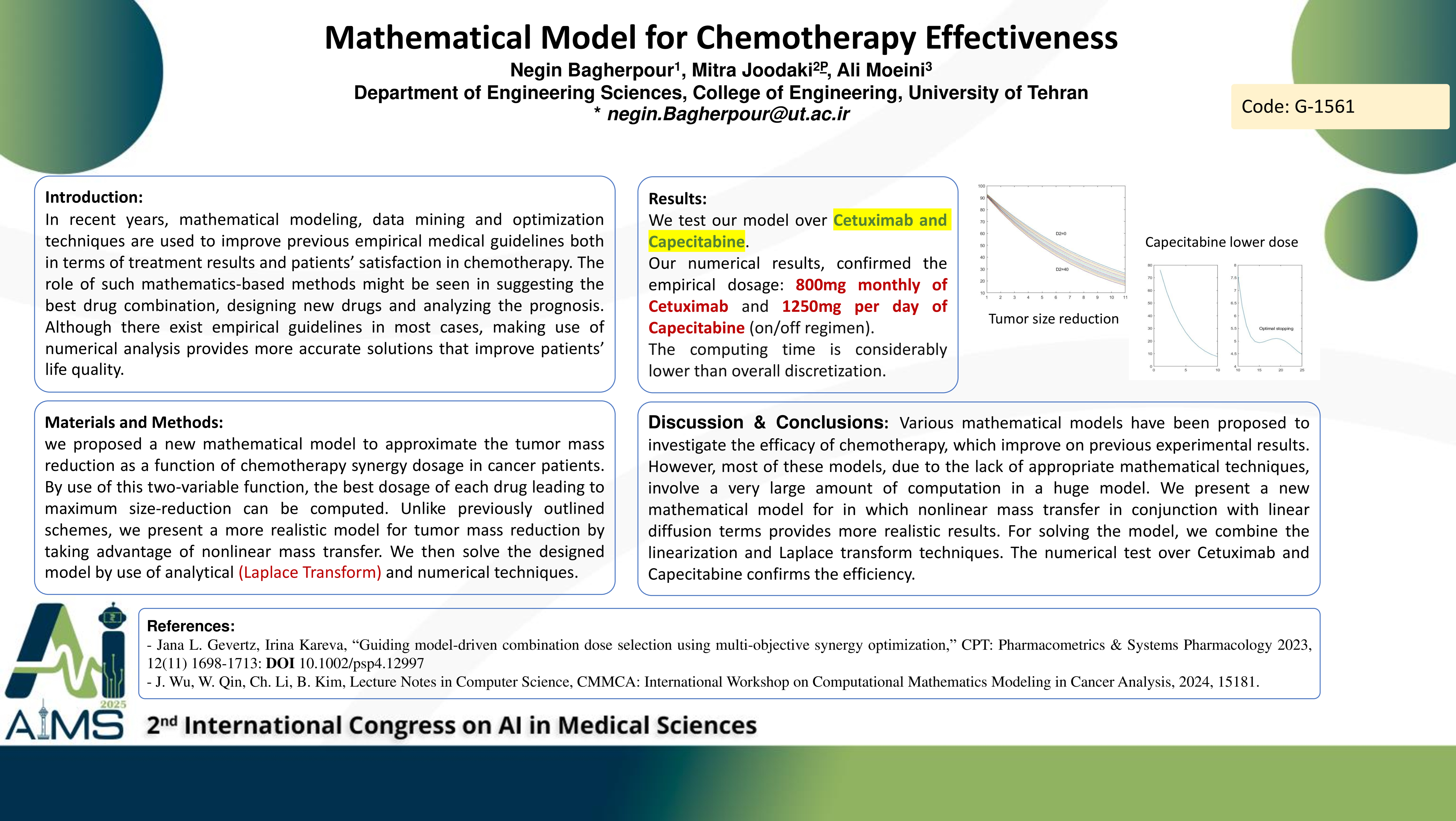Mathematical Model for Chemotherapy Effectiveness
Code: G-1561
Authors: Negin Bagherpour *, Mitra Joodaki ℗, Ali Moeini
Schedule: Not Scheduled!
Tag: Drug Discovery
Download: Download Poster
Abstract:
Abstract
Background and aims: In recent years, mathematical modeling, data mining and optimization techniques are used to improve previous empirical medical guidelines both in terms of treatment results and patients’ satisfaction in chemotherapy. The role of such mathematics-based methods might be seen in suggesting the best drug combination, designing new drugs and analyzing the prognosis. Although there exist empirical guidelines in most cases, making use of numerical analysis provides more accurate solutions that improve patients’ life quality. Method: In this paper, we proposed a new mathematical model to approximate the tumor mass reduction as a function of chemotherapy synergy dosage in cancer patients. By use of this two-variable function, the best dosage of each drug leading to maximum size-reduction can be computed. Unlike previously outlined schemes, we present a more realistic model for tumor mass reduction by taking advantage of nonlinear mass transfer. We then solve the designed model by use of analytical and numerical techniques. From mathematical point of view, analytical solutions for the linear parts and numerical solutions for quadratic parts of the model, decrease the computational complexity. Low computational cost makes this model a proper choice for prognosis analysis and case-sensitive treatment suggestions as well. Results: The generated model is finally optimized by updating its hyper parameters in an artificial neural network. To confirm the efficiency of our proposed model, we test it over Cetuximab and Capecitabine as a widely-used chemo combination for colon, lung, liver and breast cancer. Based on our numerical results, the computed tumor size values seem reasonable in comparison to empirical data. Conclusion: Various mathematical models have been proposed to investigate the efficacy of chemotherapy, which improve on previous experimental results. However, most of these models, due to the lack of appropriate mathematical techniques, involve a very large amount of computation in a huge model. We present a new mathematical model for in which nonlinear mass transfer in conjunction with linear diffusion terms provides more realistic results. For solving the model, we combine the linearization and Laplace transform techniques. The numerical test over Cetuximab and Capecitabine confirms the efficiency.
Keywords
System-Dynamics, Drug-Effectiveness, Synergy, Tumor-Mass, ANN
